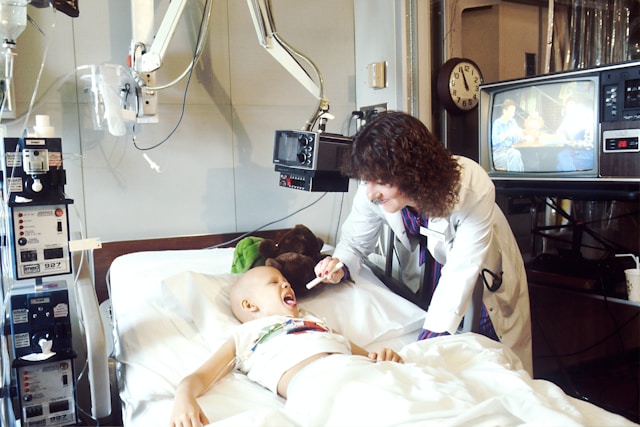Childbirth is a critical time for both the mother and baby, requiring diligent and competent medical care. Unfortunately, medical malpractice during childbirth can lead to serious, lifelong consequences or even fatalities. Recognizing the signs of medical malpractice is crucial for parents to protect their rights and ensure accountability. This article explores how to identify potential signs of malpractice during childbirth, emphasizing awareness and action.
What Is Medical Malpractice During Childbirth?
Medical malpractice during childbirth occurs when a healthcare provider’s negligence or deviation from the accepted standard of care results in harm to the mother or child. Such incidents can include misdiagnosis, surgical errors, failure to act on complications, or improper use of medical equipment. Understanding the definition and scope of malpractice is the first step toward recognizing potential issues.
Common Types of Medical Malpractice in Childbirth
Delayed or Inadequate Diagnosis of Complications
Timely diagnosis of complications such as preeclampsia, gestational diabetes, or fetal distress is essential for safe delivery. Failure to recognize these conditions can lead to preventable injuries or fatalities. Signs of diagnostic negligence include:
- Ignoring patient-reported symptoms like severe headaches or vision changes.
- Failing to monitor fetal heart rate effectively.
- Misinterpreting or neglecting lab results.
Improper Use of Delivery Tools
The misuse of instruments like forceps or vacuum extractors can cause significant harm to both the baby and the mother. Potential signs of tool misuse include:
- Unexplained bruising or lacerations on the newborn.
- Head injuries, such as skull fractures or bleeding in the brain.
- Excessive vaginal tearing or uterine damage in the mother.
Errors During Cesarean Section (C-Section)
C-sections are complex procedures that require precision. Errors during a C-section may arise from poor surgical techniques, incorrect anesthesia administration, or inadequate post-operative care. Warning signs include:
- Post-surgical infections that suggest improper sterilization.
- Uncontrolled bleeding during or after surgery.
- Nerve damage or injury to nearby organs.
Failure to Respond to Fetal Distress
Fetal distress is a critical warning sign that a baby is not receiving enough oxygen. Healthcare providers are trained to respond quickly to signs such as abnormal heart rate patterns. Indicators of negligence in this area include:
- Prolonged labor without intervention.
- Lack of timely decision-making for an emergency C-section.
- Birth asphyxia leads to brain injuries like cerebral palsy.
Red Flags During Prenatal Care
While malpractice often comes to light during delivery, issues may begin during prenatal care. Recognizing red flags early can help mitigate risks.
Inadequate Monitoring of High-Risk Pregnancies
High-risk pregnancies require careful monitoring and frequent check-ups. If your provider fails to address risk factors such as advanced maternal age, preexisting health conditions, or multiple pregnancies, this may constitute negligence.
Lack of Communication and Informed Consent
Healthcare providers must clearly communicate the risks and benefits of procedures and obtain informed consent. Instances of malpractice can arise if:
- Procedures are performed without your knowledge or agreement.
- Key information about risks or alternative treatments is withheld.
Recognizing Post-Birth Signs of Malpractice
Some signs of malpractice may not become apparent until after childbirth. Both mothers and newborns should be closely monitored for complications that could indicate negligence.
Postpartum Issues in Mothers
For mothers, unaddressed complications after delivery can signify malpractice. Examples include:
- Severe infections due to retained placenta or poor wound care.
- Chronic pain or injuries from untreated tearing.
- Blood clots are caused by failure to administer preventive measures.
Neonatal Complications
For babies, signs of potential malpractice include:
- Developmental delays or physical impairments.
- Unexplained fractures, nerve damage, or other injuries.
- Symptoms of oxygen deprivation, such as seizures or blue skin tone.
What to Do If You Suspect Medical Malpractice
If you believe that medical malpractice occurred during childbirth, it is essential to act promptly. Here are the steps to take:
Document Everything
Maintain detailed records of your medical history, including prenatal visits, delivery notes, and postnatal care. Take photographs of any visible injuries and keep track of symptoms and concerns.
Seek a Second Opinion
Consulting with another medical professional can provide clarity about whether negligence occurred. A second opinion may confirm your suspicions or offer alternative explanations for the complications.
Consult a Medical Malpractice Attorney
Legal professionals specializing in medical malpractice can help evaluate your case. They can guide you through the process of obtaining expert medical reviews and filing a claim if necessary.
File a Complaint
Consider filing a formal complaint with the hospital or medical board. This step can prompt internal investigations and potentially prevent similar issues for future patients.
How to Prevent Medical Malpractice During Childbirth
While some factors are beyond our control, proactive measures can reduce the likelihood of malpractice.
Choose a Trusted Healthcare Provider
Researching the reputation and track record of your obstetrician or midwife is crucial. Look for providers with positive reviews, strong communication skills, and experience with high-risk pregnancies if applicable.
Stay Informed About Your Care
Educate yourself about pregnancy, childbirth, and potential complications. Ask questions and advocate for yourself if something feels off. Being an informed participant in your care helps ensure accountability.
Bring a Birth Advocate
Having a birth advocate, such as a doula or a knowledgeable family member, can provide support and an additional set of eyes during delivery.
Conclusion
Medical malpractice during childbirth can have devastating consequences, but recognizing the warning signs can help protect your family states Birth Injury Lawyers Group. By understanding common forms of malpractice, staying vigilant during prenatal care, and taking swift action if issues arise, parents can navigate this challenging time with greater confidence and security. If you suspect malpractice, do not hesitate to seek professional advice to safeguard your rights and well-being.






